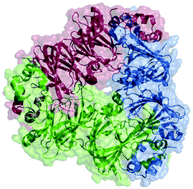The effect of thermal processing on the behaviour of peanut allergen peptide targets used in multiple reaction monitoring mass spectrometry experiments†
Abstract
Mass spectrometry-based methods offer an alternative means of determining allergens in foods. Whilst targeted methods are likely to offer the most robust approach for detection and quantification, little is known about how food processing may affect the behaviour of peptide targets. A systematic study has been undertaken to investigate the effects of thermal processing (boiling, roasting, frying) on the behaviour of a suite of peanut peptide targets representing the major clinically-relevant allergens. Initially the effect of thermal processing on protein extractability was investigated and a mass spectrometry-compatible buffer identified comprising 50 mM Tris-HCl, pH 8.8 containing 50 mM dithiothreitol and 0.04% (w/v) acid labile detergent which was able to extract 45–100% of protein from raw, boiled, roasted and fried peanuts using sonication at 60 °C. Eight peptide targets were identified including two peptides from each cupin allergen, Ara h1 and Ara h3 and four peptides from the prolamin superfamily allergens Ara h2, 6 and 7. AQUA peptide standards were synthesised and used to undertake multiple-reaction monitoring experiments, giving assay sensitivities of 0.1–30 amoles of peptide on-column (3 : 1 signal : noise), calculated limits of quantification between 96–1343 amoles of peptide on-column and a linear dynamic range of 4–5 orders of magnitude. Absolute quantification of individual peanut allergens in thermally processed samples showed that peptide targets in the cupin allergens were more prone to processing-induced effects than those from Ara h2, 6 and 7. Targets flanked by arginine residues showed greater thermostability. Identification of processing-stable targets, coupled with more efficient extraction procedures and a wide dynamic range, shows that targeted mass spectrometry methods have great potential as an additional method for quantifying peanut allergens in complex food matrices.

- This article is part of the themed collections: Analyst Recent Open Access Articles and Detecting food authenticity and integrity

 Please wait while we load your content...
Please wait while we load your content...